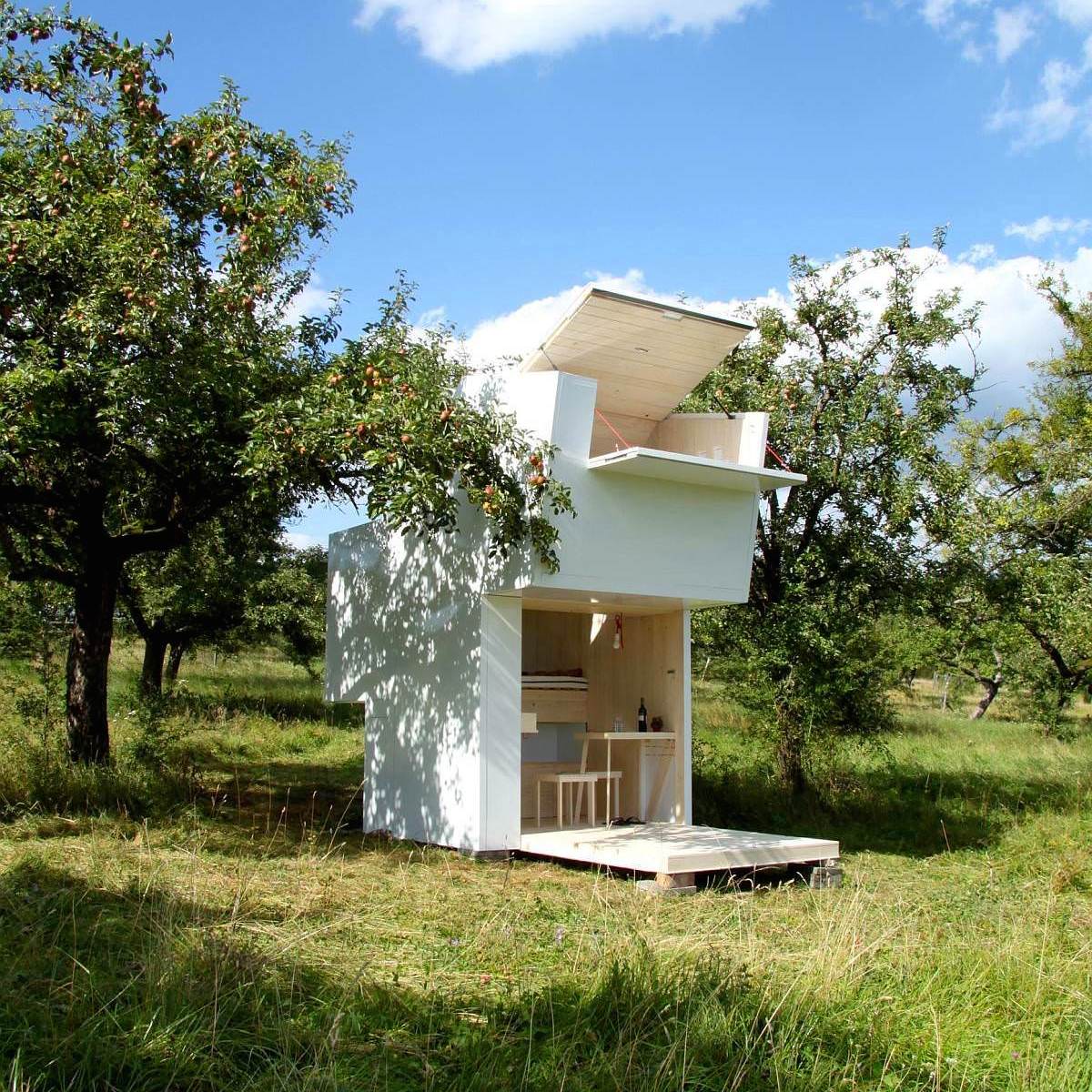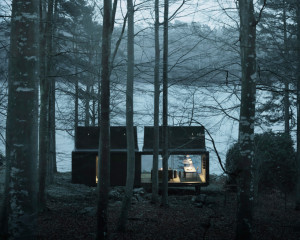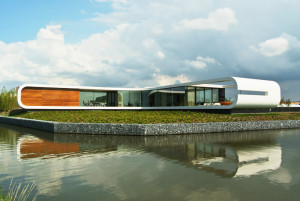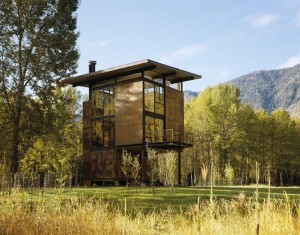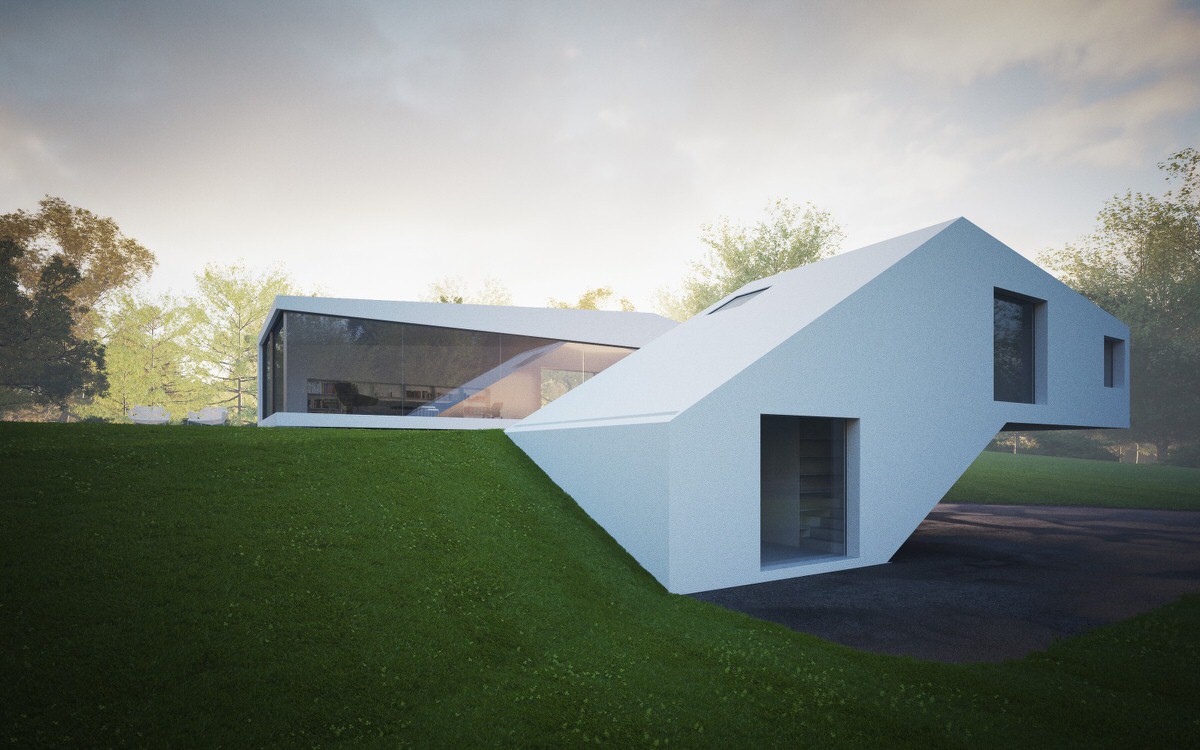
Three students at the Bauhaus University in Germany designed this compact structure during their studies as a relocatable dwelling for a single inhabitant. The group, consisting of Matthias Prüger, Manuel Rauwolf and Ulrike Wetzel, went on to form Allergutendinge and built this tiny house which they dubbed Seelenkiste (translated Spirit Shelter/Hut).
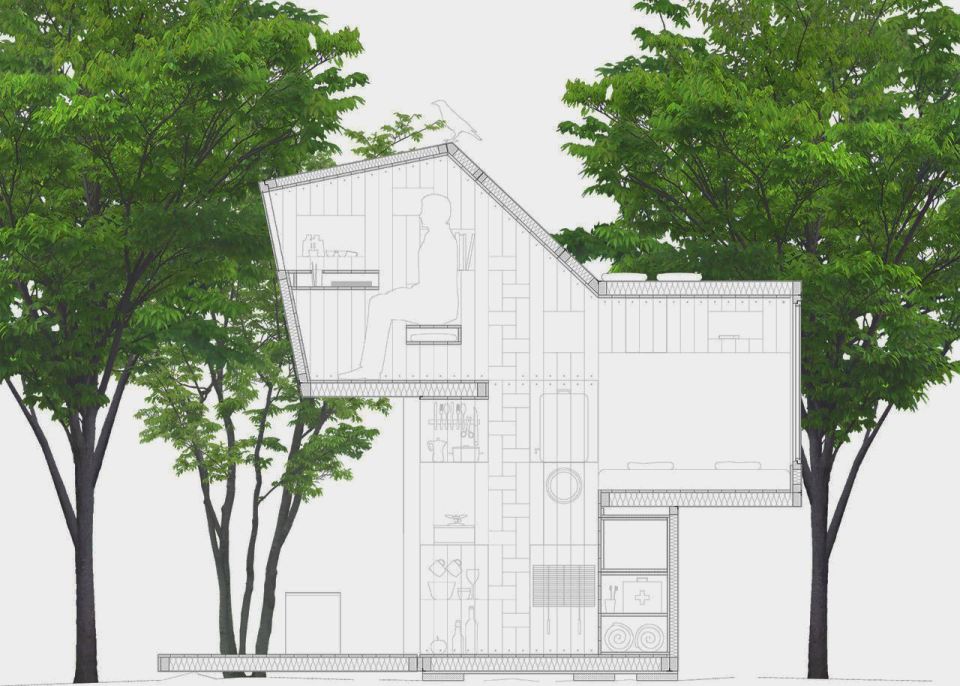
The hut is intended to be assembled in a secluded, rural setting to give the occupant a quiet residence for contemplation and self-exploration. Allergutendinge aimed to hook into the arcadian dream, a sense of being at one with nature, with this simple Spirit Shelter.
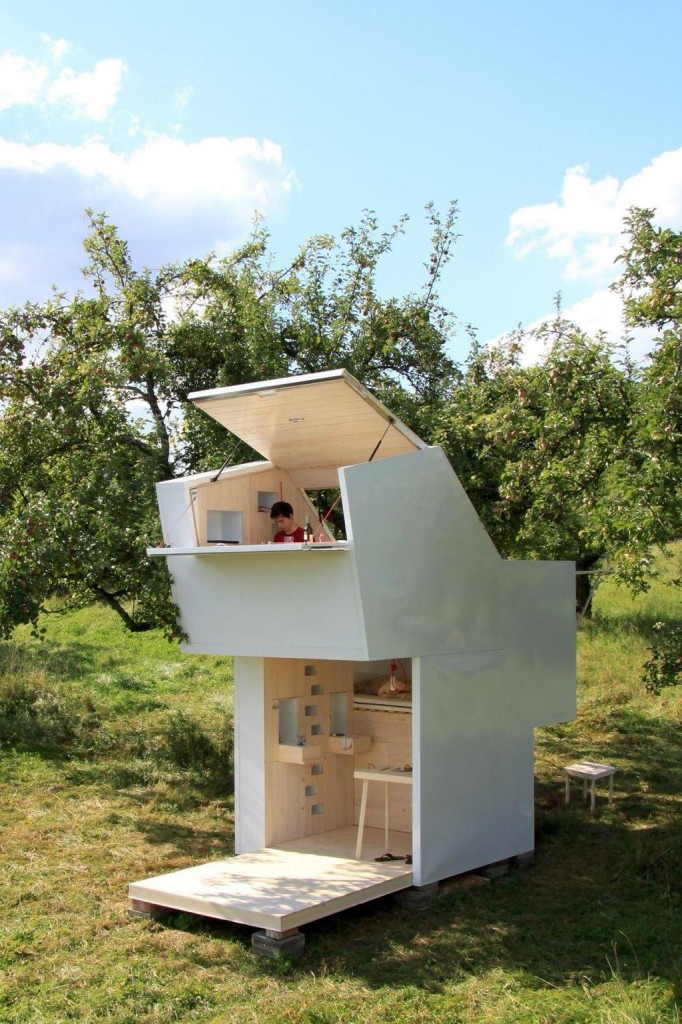
The white exterior of the Spirit Shelter is comprised of several fibreglass reinforced plastic panels, while a more cosy interior of unfinished timber cladding give a sense of rustic homeliness.

Seelenkiste has a boxy composition that is largely similar to Hut on Sleds on a New Zealand beach by Cross Clarke Carnachan Architects. These two projects bear a number of other similarities: they are both relocatable, sustainable, vertically built, and both feature front facades which can be opened up entirely.
In the case of Spirit Shelter, this front wall folds down like a drawbridge to form decking and this type of feature is a common reoccurrence in ‘small space’ dwellings. These ‘walls’ offer a degree of security against break-ins while the huts are not in use, and also create a sense of spaciousness when opened in their entirety to combat feelings of claustrophobia in such tiny houses.

The Spirit Shelter is built over three levels, and while these aren’t exactly substantial enough to constitute ‘floors’, the vertical division of spaces does serve to separate their usages and make this hut, with its relatively small volume, feel more like a fully fledged house with distinct rooms.
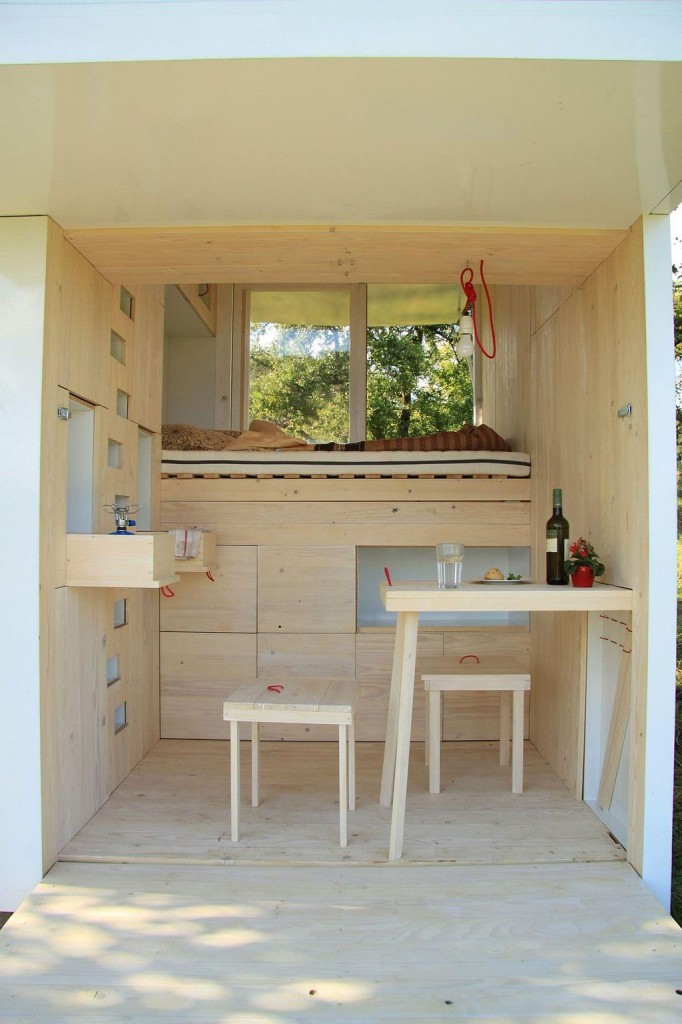
A compact kitchen-diner exists on the ground floor which features all sorts of integrated space-saving ideas. There’s a foldout dining table for example as well as a camping stove concealed within a drawer. But innovative integrated storage solutions aren’t just to be found in the kitchen, they are present throughout Seelenkiste.
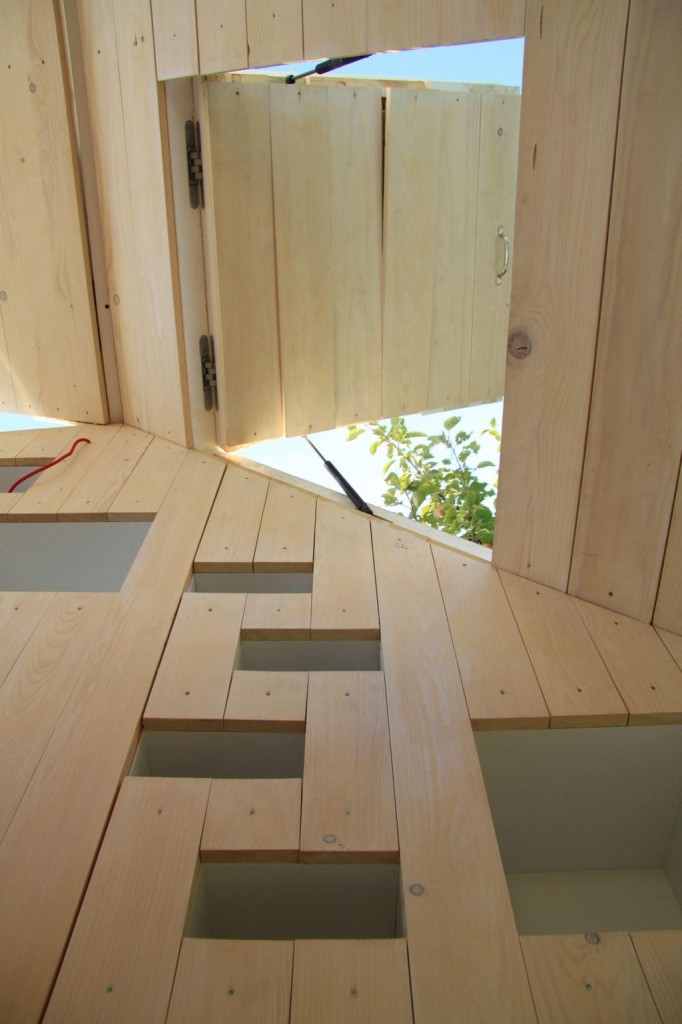
There are shelves, cubbyholes and other discrete panels on virtually all the walls so the small space never feels cluttered, and a line of recessed shelves even form the ‘ladder’ that provides access to the upper levels. A bed is to be found at the mid level — the reason for the jutting form at the rear of the shelter — while a studying/work area was established at the top of the dwelling.
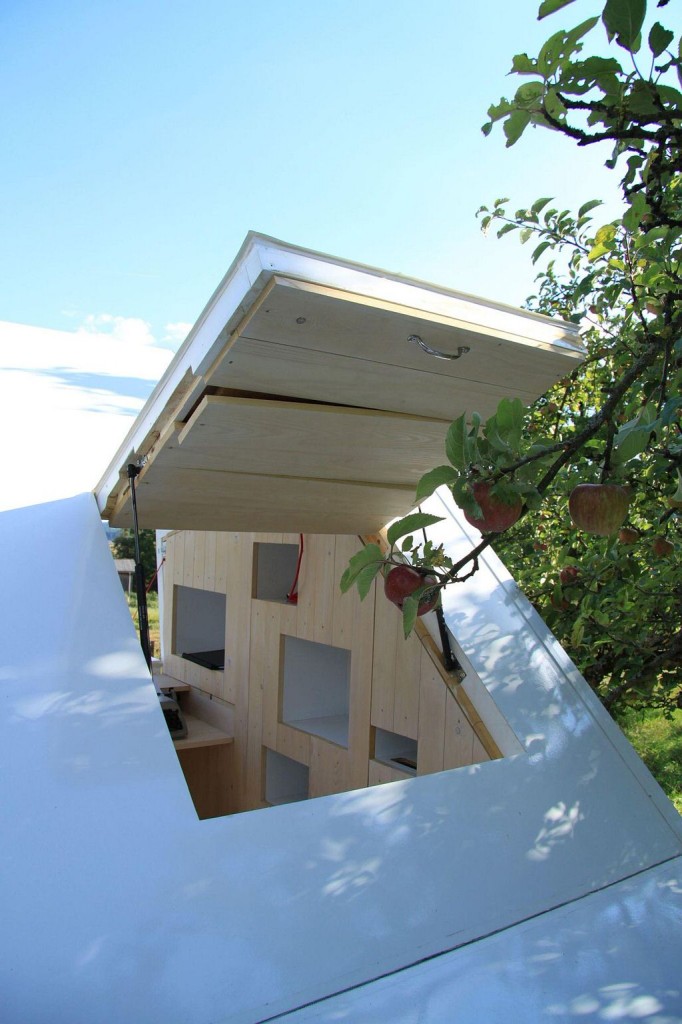
Share this Post
Further Info
| Architect | Allergutendinge |
|---|

